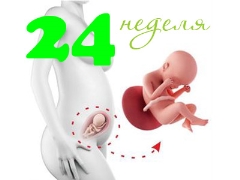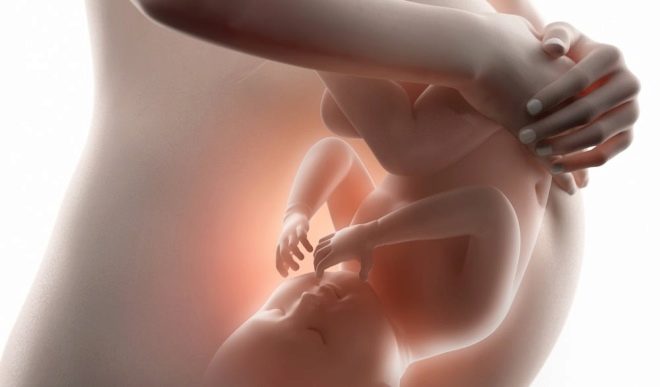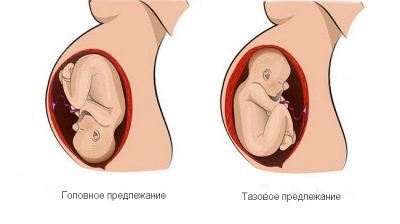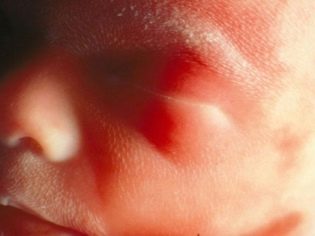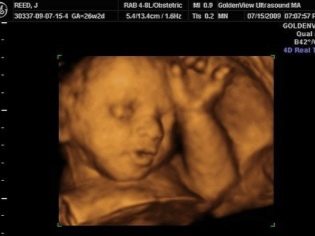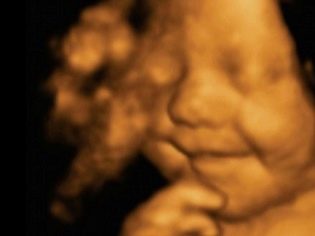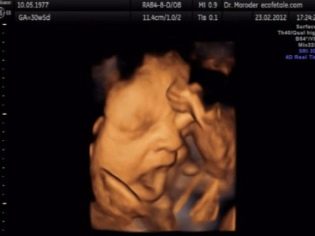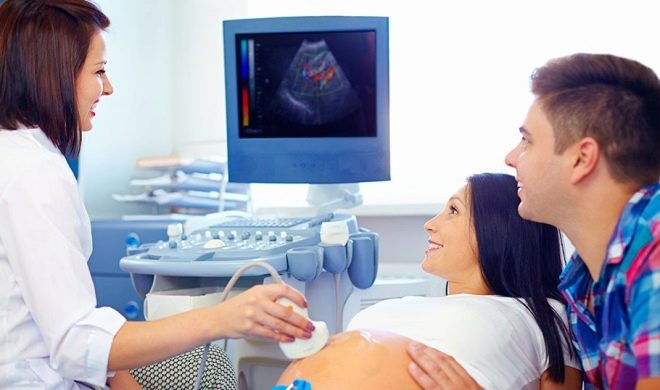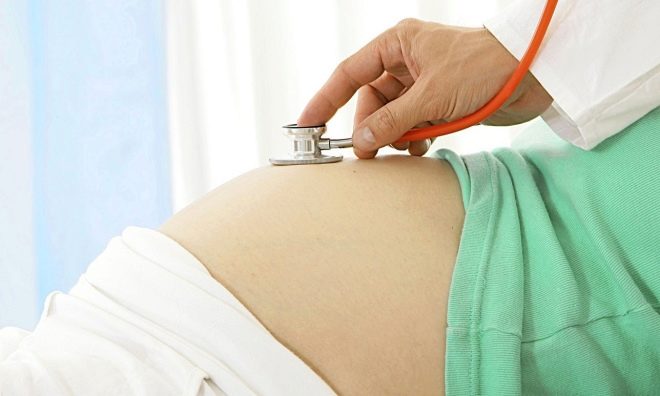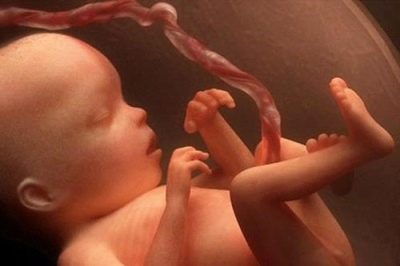Fetal development in the 24th week of pregnancy
24 week of pregnancy is characterized by a number of specific changes in the body of the fetus.
Location in the womb
The position of the fetus in the womb is a very important clinical parameter. The location of the baby in the uterus is necessarily evaluated several times during the entire pregnancy. It is important to remember that the fetus can be located in the womb at the 24th week of gestation in a completely different way than immediately before birth.
Usually, such a change of position occurs in restless children who like to actively move and even roll over. On the location of the fetus affects quite a lot of different factors.
The most favorable, from a physiological point of view, is headache presentation. In this case, the first childbirth will give birth to the head, and then other parts of the baby’s body will already be born. Experts note that with headache the risk of developing dangerous birth injuries and injuries is quite low. In this case, independent natural childbirth is possible.
A less favorable option is the location of the baby - pelvic presentation. In this case, the first in the direction of the birth canal is the pelvis of the child. In pelvic presentation, the process of natural independent labor can be complicated by the development of various traumatic injuries in both the woman and the fetus.
Pregnant women, as a rule, having heard from the doctor that the child is in a pelvic presentation, begin to panic. Panic is not worth it: the position of the baby before birth can change several times. At the 24th week of pregnancy, previa is not yet final.
If the baby is in this position in the uterus, then the pregnant woman should be more attentive to her condition. She needs to monitor the possible appearance of various bleeding from the genital tract or the development of leakage of amniotic fluid.
If such symptoms appear, then you should not delay in seeking medical help.
If the baby is in head presentation, then this is a very favorable sign. A moderate physical activity of the fetus, as a rule, will not contribute to changing the position of the baby in the uterus. If for some reason the child feels a certain discomfort and begins to push hard, then in this case he will be able to change his presentation over time.
First sensations
During this period of pregnancy, the baby’s nervous analyzers are already quite developed. In the brain of a child, numerous neurons “work” every day. A large number of special contacts or connections between them provide changes in the behavior of the baby. It should be noted that every day the number of movements made by the baby increases significantly.
The mass of the brain in the fetus at 23-24 obstetric week of pregnancy is about 100 grams. It has already formed the main grooves and gyrus. With each subsequent day of pregnancy, the cerebral cortex continues to develop.
Intensive development of the nervous system causes the fact that the child has the first sensations. Of course, they are still different from those that manifest in him after birth. With the help of nerve analyzers or sense organs, the baby begins to know himself and the water world in which he is still located.
Vision
At the 24th week of pregnancy, the baby’s eyes begin to open. He does this while the baby is not quite willing, as the bright light makes him uncomfortable.
According to scientific research, the fetus, which is located in the womb, is able to respond to the light facing it. So, when bright rays hit the face of a child - he turns away from them. It is believed that high insolation can even enhance the motor activity of the baby.
Outside, the eyes of the fetus are covered for centuries. It is believed that by this period of pregnancy a circadian rhythm ability begins to form in a baby. The circadian rhythm is the child's ability to sleep at night and stay awake during the day. Until the 24th week of pregnancy, the fetus did not react in any way to the change of day and night - with each successive day of pregnancy this ability to develop a circadian rhythm in a baby will improve.
Hearing
The auditory analyzer, through which the baby can distinguish different sounds at this stage of pregnancy, has already been formed. It should be noted that the full-fledged work of the body will occur somewhat later - after the birth of the baby. However, the first manifestations of the functioning of the auditory analysis can be noted already on this period of intrauterine development of the fetus.
The baby at 24 weeks of pregnancy is already able to distinguish between different sounds and even voices. It is noticed that the maternal voice, as a rule, has a calming effect on the child who is in the womb.
It has a very beneficial effect on the nervous system of the baby and pleasant classical music. Some scientists even believe that in this period of intrauterine development of the fetus, it is already possible to begin shaping its musical taste. To do this, they offer future mothers who are in the 24th week of pregnancy to listen with their baby various musical works.
It is very important to choose the melodies in such a way that they do not cause any discomfort to the baby. If while listening to a piece of music a pregnant woman notices that the baby is kicking too hard in her belly, then, most likely, this melody is simply not liked by the child - it is better to choose another one.
No less effective method of calming the baby is reading him fairy tales. Of course, the baby will not be able to understand the meaning of the read, but the beneficial effect on his actively developing nervous system will be exerted. Such joint reading of books and fairy tales also strengthens the psycho-emotional connection between mother and baby.
Taste
It is surprising that the baby, which weighs about half a kilogram, already has receptors in the tongue. They are able to distinguish between different flavors. So, the baby "with ease" can recognize the salty, sweet and even bitter taste. He does this when swallowing amniotic fluid.
The taste of amniotic fluid is largely influenced by the food consumed by the expectant mother. Some scientists believe that the taste habits and addictions in humans are formed in the second trimester of pregnancy. So, in the future, the baby can become a sweet tooth, or, conversely, fall in love with salty foods.
Amniotic fluid, which the fetus actively swallows, gets inside his body. In the future, some nutrients, such as glucose, are absorbed into the baby’s bloodstream, while others are excreted through the kidneys and the urinary canaliculus system.
Experts have found that during the day the fetus is able to swallow about 400-600 ml of amniotic fluid. It is necessary for him not only for the active development of the digestive and urinary systems, but also for the improvement of the respiratory muscles. The fact is that when swallowing the amniotic fluid, the pectoral muscles actively work.Such involvement of the pectoral muscles further helps its development and is necessary for the child to perform his first breath.
Physical activity
At 24 weeks pregnant expectant mother already quite feels her baby. The baby is usually actively kicked and pushed. Such sensations a woman may experience in different parts of the abdomen. It depends on how her baby is located.
The fetus, as a rule, may knock or touch the walls of the uterus with his hands. A sufficiently large volume of the uterus allows the child to push off with feet from one wall and move in the aquatic environment to another. From the outside it may seem that the baby is “floating” in the womb.
With each successive day of pregnancy, the character of the movements will change: the baby grows, its weight and height increase, which leads to the fact that the motor activity of the fetus will manifest itself in a different way.
With multiple pregnancies, the behavior of babies with respect to each other is interesting. The twins are not only actively exploring their own body, touching themselves for the face and umbilical cord, but also relate to individual parts of the body of a little brother or sister. Ultrasound specialists say that during the study it is interesting for them to look at the behavior of the twins in the uterus: children can hold each other's hands and even try to fight.
Motor activity of the fetus at this stage of pregnancy is a very important clinical criterion for determining the state of the baby in the womb. Experts believe that during the day the fetus must make at least 10 active movements. It should be noted that it happens that the baby is actively moving, but his mother does not feel all his movements. This affects a huge number of reasons.
In any case, if for some reason the physical activity of the fetus has changed significantly, then the woman should definitely discuss this fact with her obstetrician-gynecologist.
Body parameters
Each gestation period is unique. Every week the baby continues to grow and develop. In order to determine the exact size of the fetus, doctors resort to an ultrasound examination method, called fetometry. During this study, the doctor makes special measurements, and then reflects them in his medical report.
Determining the parameters of the body of the fetus is an important diagnostic criterion that allows specialists to understand how well the intrauterine development proceeds.
Important clinical criteria in a child are his height and weight. Also during fetometrii specialist can determine other clinical parameters.
The normal values of the clinical parameters determined by the fetus are presented in the following table:
Investigated trait | Norm at 24 weeks gestation |
Growth | 27-35 cm |
Body mass | 500-600 grams |
In addition to determining the parameters of the body in a child, his heartbeat is necessarily evaluated. The baby at this stage of pregnancy is already actively working the heart, which pumps blood through the blood vessels. To assess the functioning of the cardiovascular system, doctors use the definition of heart rate or heart rate.
Heart rate can be assessed during ultrasound, as well as with direct listening to the abdomen with a stethoscope. If the baby is quite large, then hear his heart beating, maybe the future dad. To do this, he should simply put his ear to the stomach where the baby "lives" and listen.
Heart rate is one of the most important clinical criteria for fetal well-being. For each period of pregnancy has its own norms of this indicator. The standards for this criterion are presented in the table below:
Detectable feature | The rate of heart rate in 24 weeks of pregnancy |
Fetal heart rate | 140-150 beats per minute |
Appearance
The fruit looks quite like a real person, but only in a “miniature” version. The child has already formed the main features of the face. So, the contours of the nose and forehead are well defined.The fetus has already formed cheeks, but they are still quite flat.
The skin of the baby is covered with wrinkles. The skin color is pink with a slight yellowish-gray tint due to the original lubricant. It is formed by mixing the secretion of the sebaceous and gonads with desquamated epithelium.
The fruit still seems pretty thin. This is largely due to the lack of a sufficient amount of brown adipose tissue in the baby. With each subsequent day of pregnancy, its number in the children's body increases.
Brown adipose tissue is necessary for the baby so that he can live independently of his mother's tummy. A sufficient amount of fat will help the child simply not to freeze after birth.
About what happens to the fetus and the future mother in the 24th week of pregnancy, see the following video.
